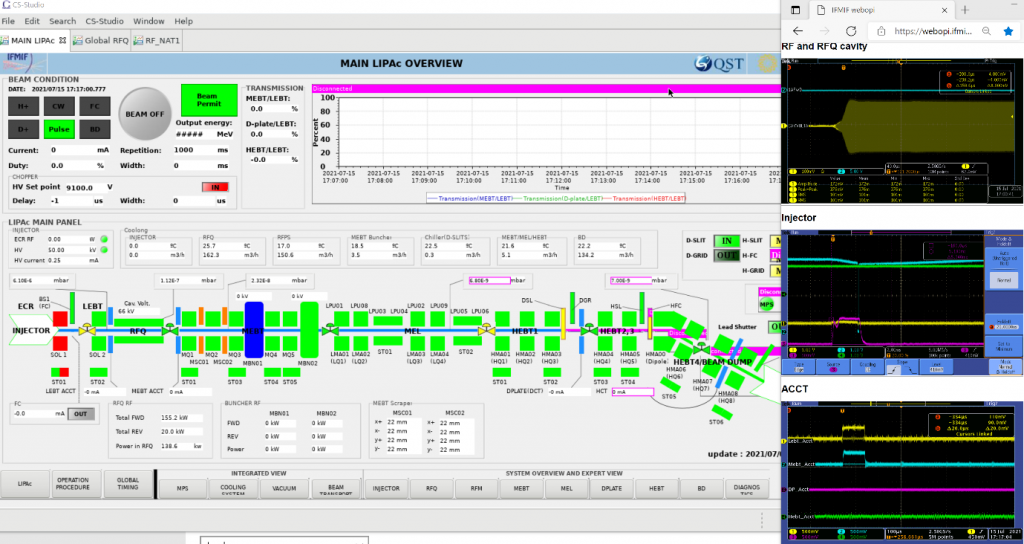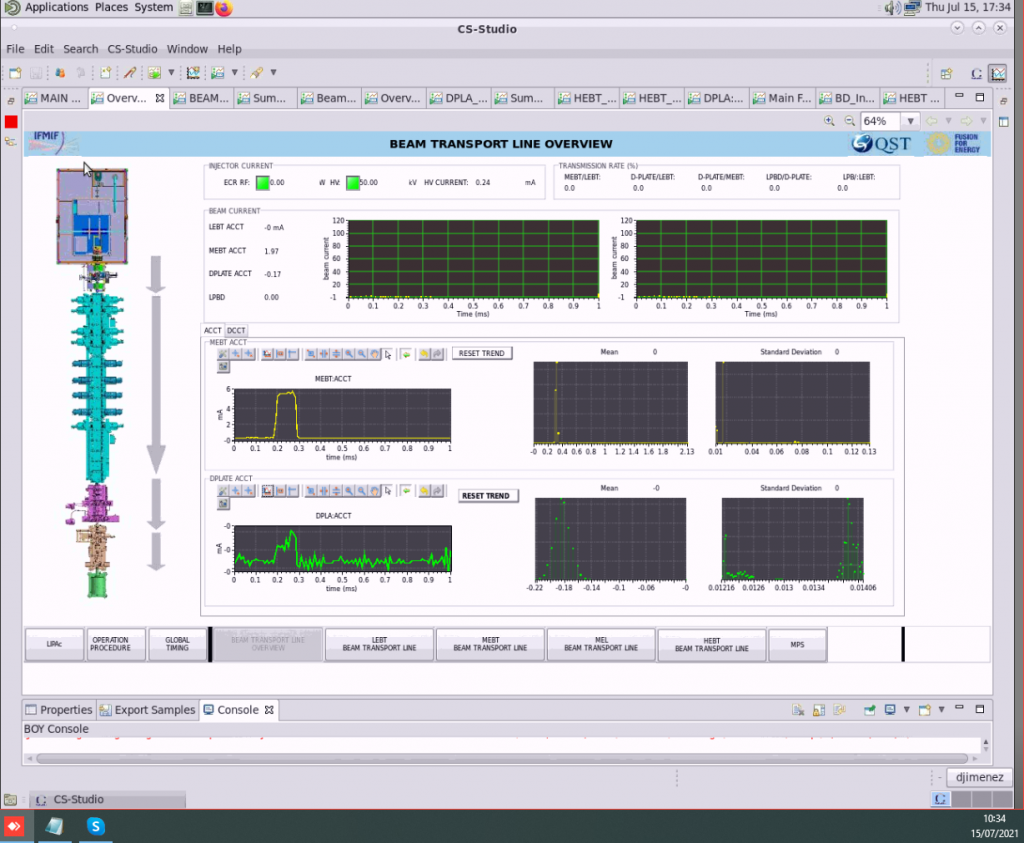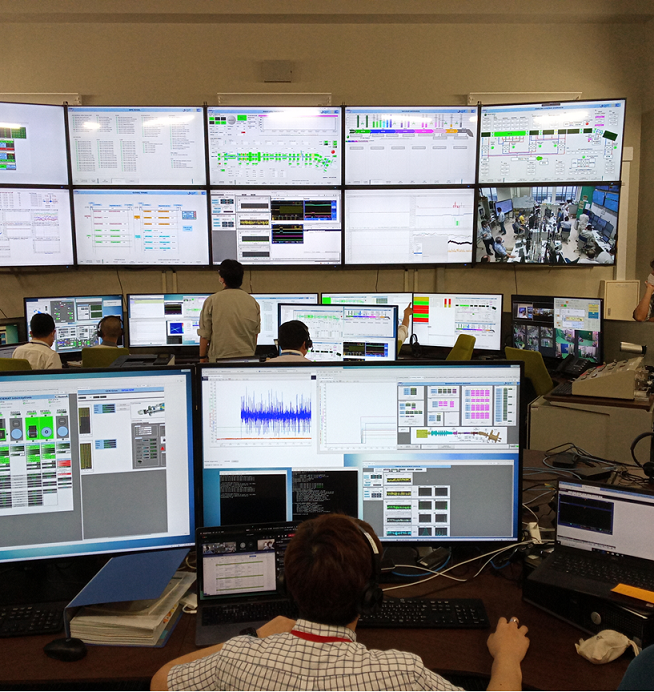Injector
Beam extraction with H+ at 30 mA / 50keV was performed and the reproducibility of the beam characteristics was confirmed. Afterward the beam extraction with D+ was started and a current of 30 mA was achieved. The phase B+ commissioning can be started with such beam conditions.
Radio Frequency (RF) System and RFQ cavity
On HVPS 4B (High Voltage Power Supply) an interlock for Final Anode Voltage minimum is triggered when cavity voltage is set at D+ level and duty cycle is higher than 5%. With cavity voltage at H+ level the RF injection is stable. For resuming beam operation the RF system was initially set to inject RF power at H+ level in the RFQ according to the experimental programme.
Next Monday a number of interventions is scheduled on HVPS 4B to solve the issue.
Medium Energy Beam Transport (MEBT)
Further investigation of buncher #2 voltage instability at high voltages continues. Buncher#2 is not planned to be used at the beginning of phase B+ campaign.
Functional tests of updates of the LLRF (Low Level RF) SW for the timing signal have been completed.
High Energy Beam Transport (HEBT)/Beam Dump
A number of additional safety measures for HEBT vacuum system was implemented through remote session with CIEMAT. A final remote session with CIEMAT was held on July 13 for debugging dipole magnet PLC, HEBT vacuum OPI and BD instrumentation OPI.
Beam Instrumentation
The preparation of the HW for monitoring the HEBT FCU (Faraday Cup) during Phase B+ was completed. The HEBT FCU is placed before the dipole magnet (bending point of the line).
Control System
MPS (Machine Protection System) complete checks in preparation of beam operation were carried out smoothly on July 13 and 14. These tests needed the HEBT/BD LCS (Local Control System) to be connected to the LIPAcnet and all HEBT/BD OPI migrated into the integrated OPI.
Start of beam operation !
On Thursday 15 July a first dry rehearsal of the operational procedure was carried out starting at 13h30, by more than 10 operators distributed over two control rooms and with remote participation from Europe and offices on-site.
Afterwards the actual beam injection started and a first H+ beam was transported successfully through the accelerator line up to the HEBT FCU, where the oscilloscope signal confirmed the impact of the beam.
According to the experimental programme the beam current ratio for H+ and D+ should be 1:2 and the selected ion source parameters were: @20 mA injector extracted current for 10 mA H+ current at the RFQ exit and 100 us chopped pulse length with 1 Hz.
In the next days the H+ beam will be characterized at the HEBT FCU before extracting the FCU and injecting the beam all the way down to the Beam Dump. D+ beam will follow.
Disclaimer: the information reported is not meant to be technically complete and doesn’t cover all the activities currently carried out on LIPAc.





